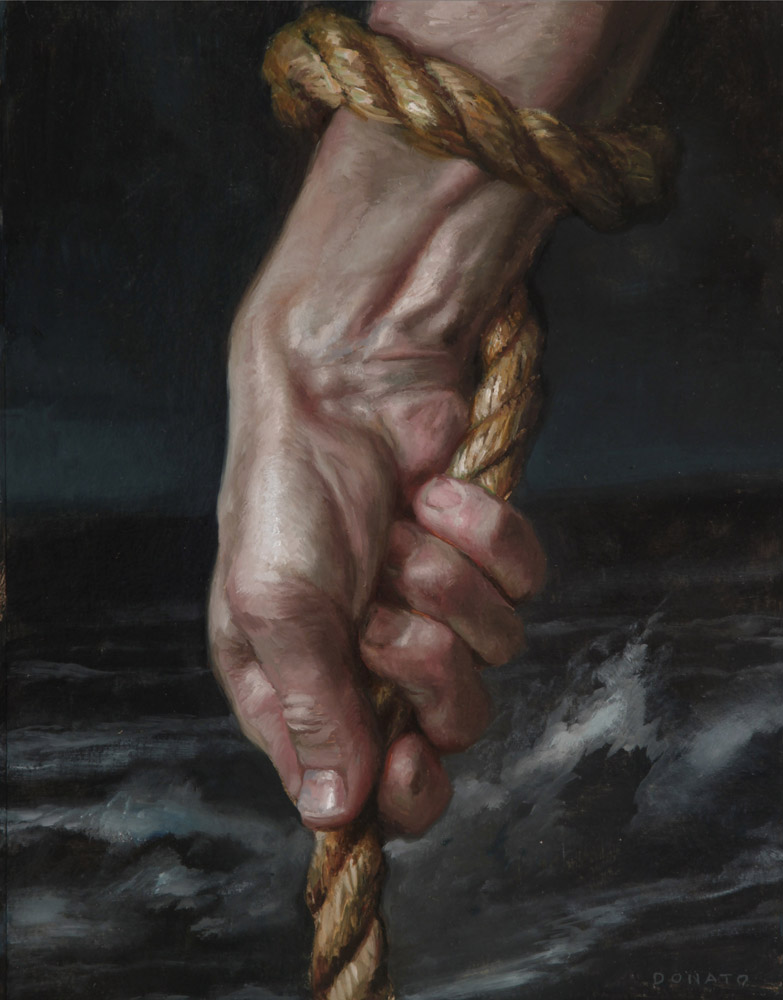 |
| Burdens-Rope oil on panel 11″x 14″ 2012 |
It is difficult to draw and paint hands. In every conversation on this topic I nod my head in understanding and agreement, for what artist hasn’t been tortured by such frustrations? Who doesn’t hate to discover protruding from the ends of a beautifully drawn arm a set of linked sausages! For years I had such digits in my renderings and would hide or avoid drawing the hands in order not to display this weakness in my art.
But all of that changed one semester at Syracuse University under the tutelage of Jerome Witkin. Jerome is a brilliant draftsman and painter of the figure. I still remember watching magic occur on paper as he drew from the live model on the first day of Anatomy Drawing. Watching the graceful lines trail away from his pencil, this was someone I had to learn from.
For one of the few times in my life, I could see that this artist held knowledge and skill at a level which I could not fathom. And here he was offering it up in the classroom! I am thankful for that chance to learn from Jerome and have valued his teaching everyday since. As I sat down and drew in my studio this afternoon, there was a little Jerome sitting on my shoulder telling me to make careful observation from life, look for the anatomical landmarks of importance, and the lastly and most importantly exaggerate. When I listen to his voice, my drawings come out sublime and alive.
I wish I could take you all back into that classroom to experience what Jerome instilled in me. But I can only give you a small sample here in this blog. Careful observation was one of the major tenets of what Jerome practiced. Taking the time to look, really look, before you make your mark. Seeing was also informed not only by my own eyes, but by making copies of other artists’ works and by drawing comparisons to details of the human figure found within anatomy books and illustrations. What Jerome was attempting to have us do was overlay what we saw with our eyes and meld it with the abstract knowledge of what we could see if we had the ability to peer into the skeletal and musculature of the figure. We were not drawing only what we saw, but also what we knew. The balance of these two principles has forever been at the root of how I handle my work to this day.
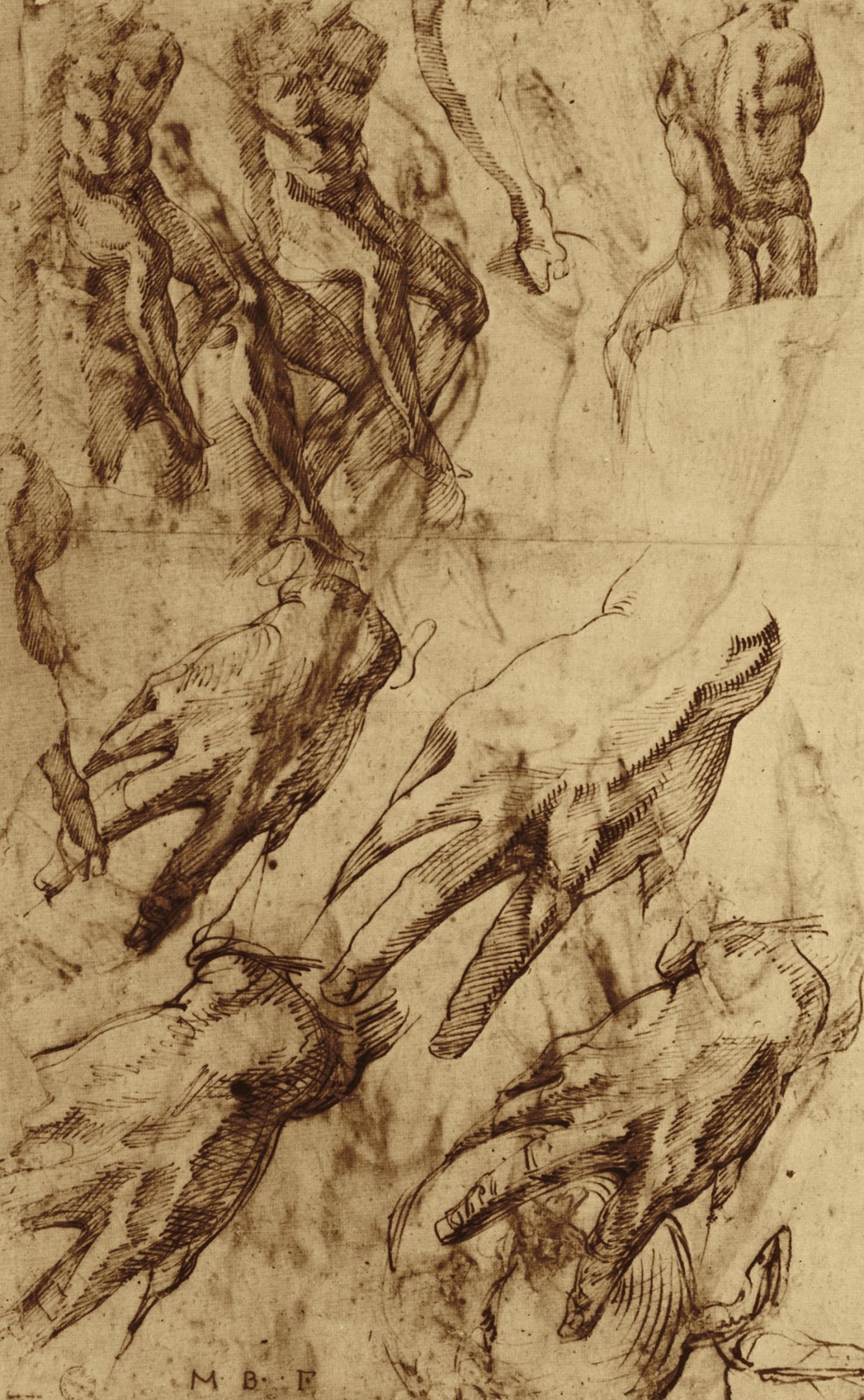 |
| Passaroti, Hands |
 |
| Andrea Del Sarto, Study of Hands |
It was from this class that I was transformed from a drawer of sausages into that of, as my friend Vincent Desiderio once proclaimed, ‘a master of hands’. One of the other key aspects of Jerome’s teaching was creating careful and detailed copies of Old Master drawings. Every week we were given such an assignment, and I still remember the few pages which helped deepen my comprehension of hands. After making near exact copies of Andrea Del Sarto’s and Passaroti’s observations (this involved not only using the same drawing materials and tone of paper, but emulating the line weight and direction of all the strokes) the cogs in the hand machinery all seems to orientate themselves into perfect alignment. I could draw hands…really draw hands!! Gone were the years of sausage making, in was the awareness of how to see and draw what I knew about hands. A veil had been lifted and my understanding of drawing changed.
 |
| Annunciation, oil on canvas, 36″ x 36″, 1992 |
Making those copies of old master hand variations made me realize that a hand is as expressive as a face. So much can be done with color, line and character. And just as you do not carve out a separate cheek or nose on a face, the digits and landscape of a hand should be treated as a whole unit, not a sum of the parts. The ability to merge surfaces and structural anatomy together allowed me to create hands which were gestural and expressive – they flowed with dynamics like the other body parts and suddenly I was not afraid to draw them! The next semester found me tackling a painting with four hands as major focal points in the work – the Annunciation. I was breaking new ground.
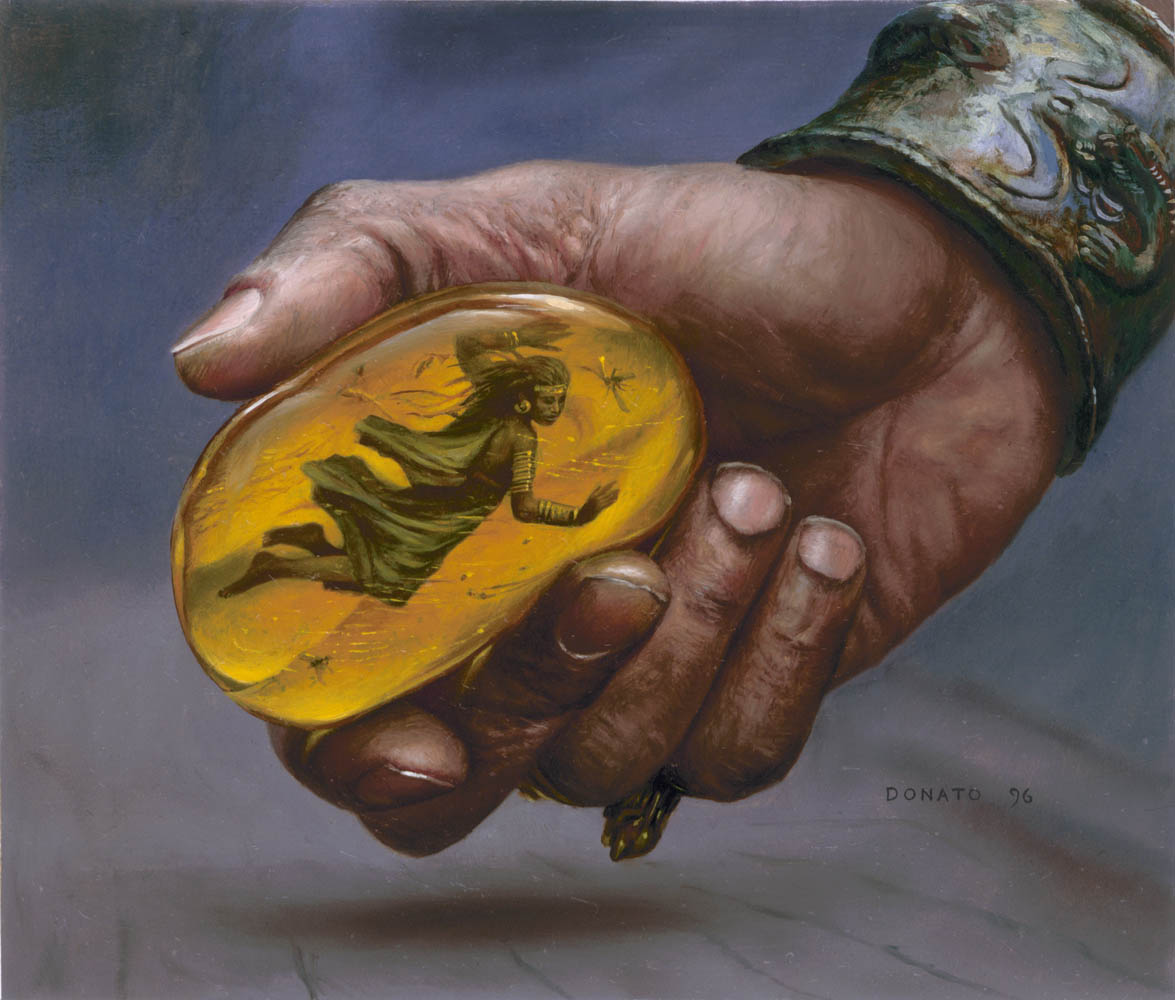
My previous post here on Muddy Colors addressed issues of challenges, and that is exactly what drove me to consider placing a hand in the composition. Rather than producing the typical image of an artifact card showing only the inanimate object, I decided to place the artifact in the hands of a user, making the object come to life in the service of a wizard. To many people it may seem an extraordinary task of complicating a composition by adding a large, detailed hand into the assignment – for we all know hands are so damn difficult to paint! But for me, it was a way to finally find a commercially viable venue for a form of expression laid dormant for years. Hands were easy, and hands I loved – I wanted to paint them as much as possible! Amber Prison was my first card for Magic, and I became known very quickly at Wizards of the Coast as the artist who could put hands on Magic.
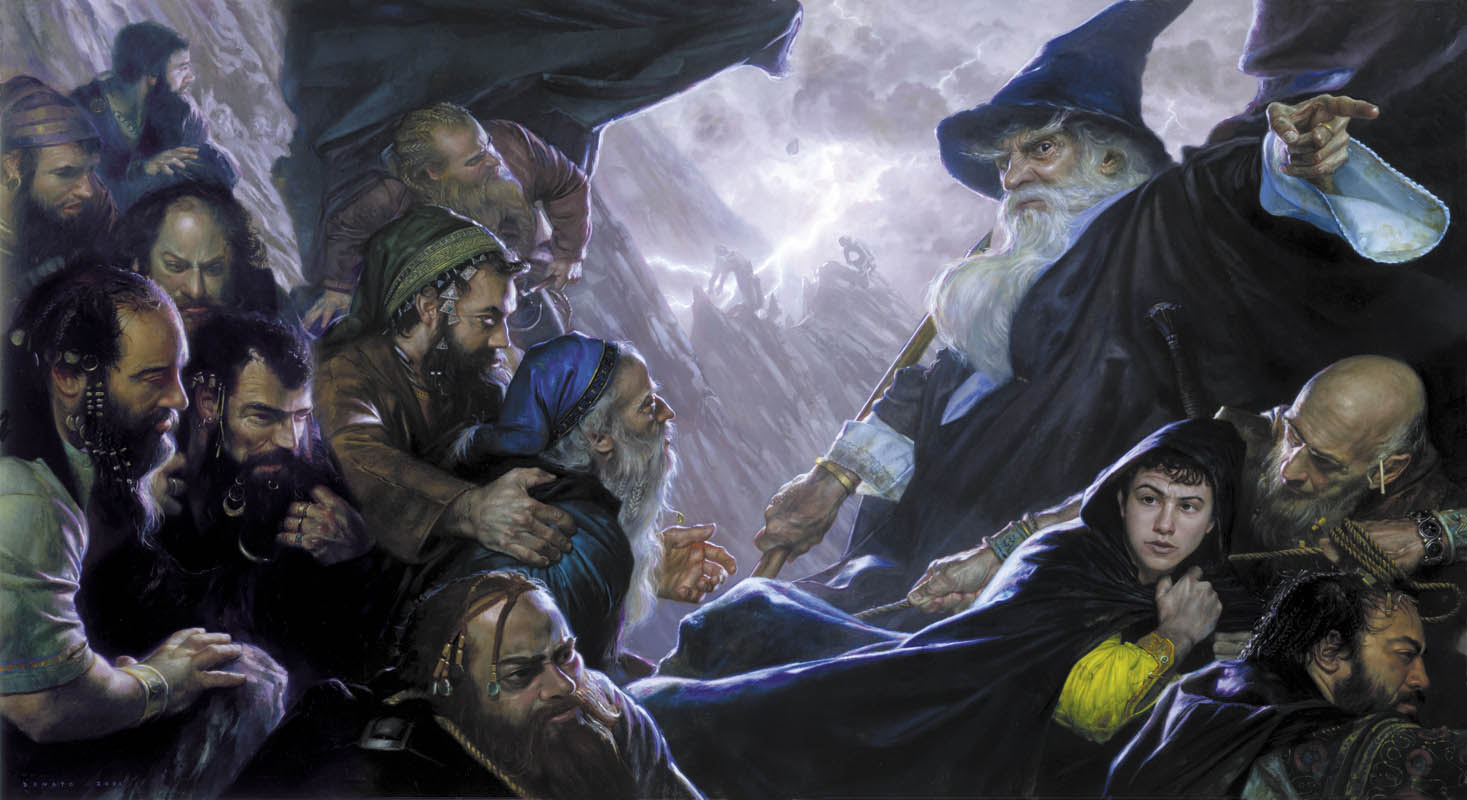 |
| The Hobbit: Expulsion, 67″ x 37″ , Oil on panel, 2001 |
Over the years I have had few commercial opportunities to use hands as focal points in a commission – the nature of the genre and marketing is heavily skewed towards facial portraiture, and had to be satisfied with the inclusion of hands along side faces in much of my main commercial work. But I did my best to pack an image with hands whenever possible, as the art for The Hobbit graphic novel cover shows.
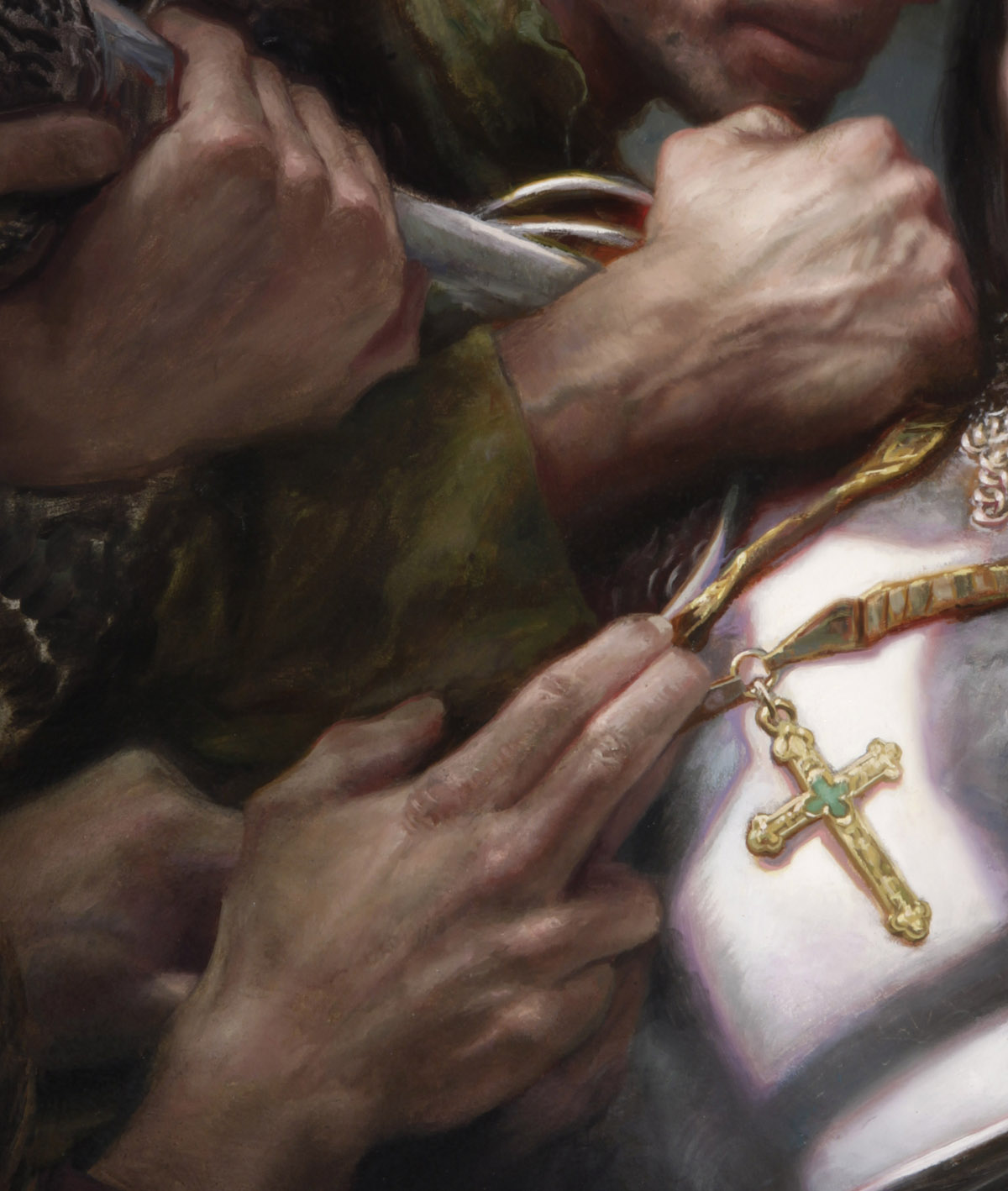
Lastly, no where is my love of hands more thoroughly placed on critical display than within the latest painting produced for my process DVD on Painting Joan of Arc. Part of the justification in creating the Joan of Arc image was to include as many hands as possible. This was done not only illuminate the step by step development through drawing, rendering in oils of the subtle color changes over their surfaces, and displaying various aspects of gestural expression, but it was done also to show how hands could be utilized as a major compositional device. The design of the image guides our eye and the narrative energy towards a focus without sacrificing the individual power of the hands’ expression. For me, the hands are as strong as the portraits of Joan and the nobleman and critical to the reading of the image. It was a pleasure to have the chance to create such an image under the watchful eye of the camera on a subject I so dearly love.
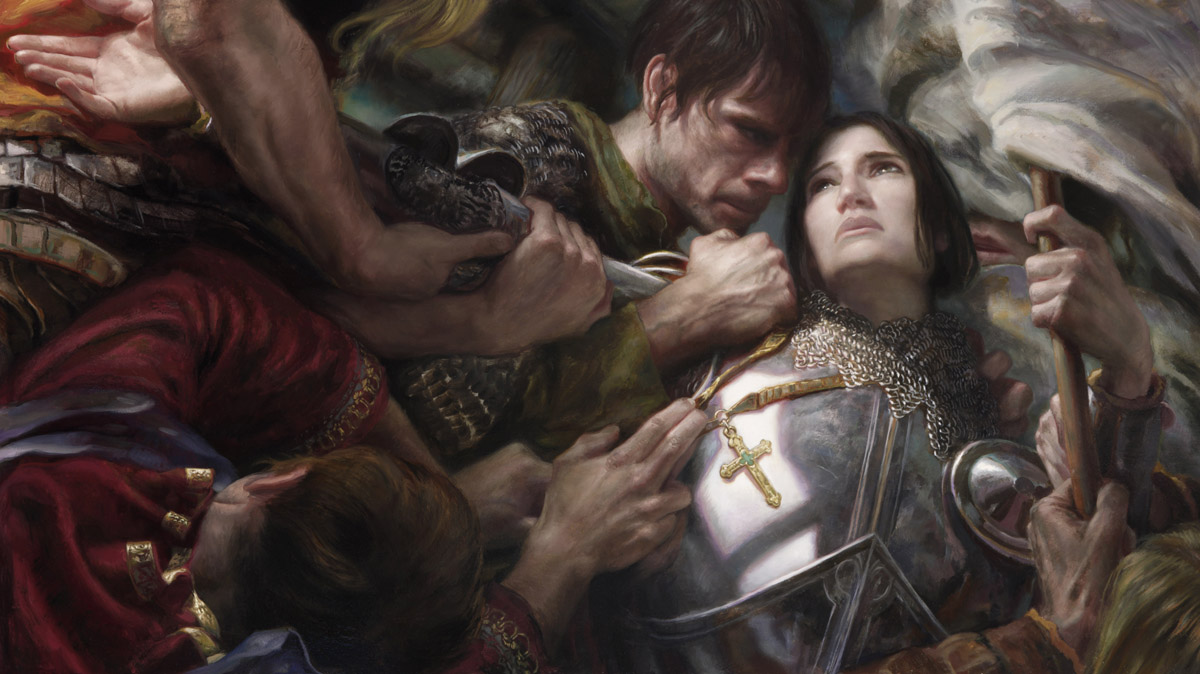 |
| Joan of Arc, 42″ x 24″, Oil on Panel, 2011 |
To wrap it all up, remember these four things when creating drawings of hands (or anything for that matter!):
1. Careful observation
2. Collaborating evidence (books, anatomical studies, etc)
3. Unify the masses/structure
4. Exaggerate in an expressive manner
Best of luck with your draftsmanship and may you all become Masters of the Hand!
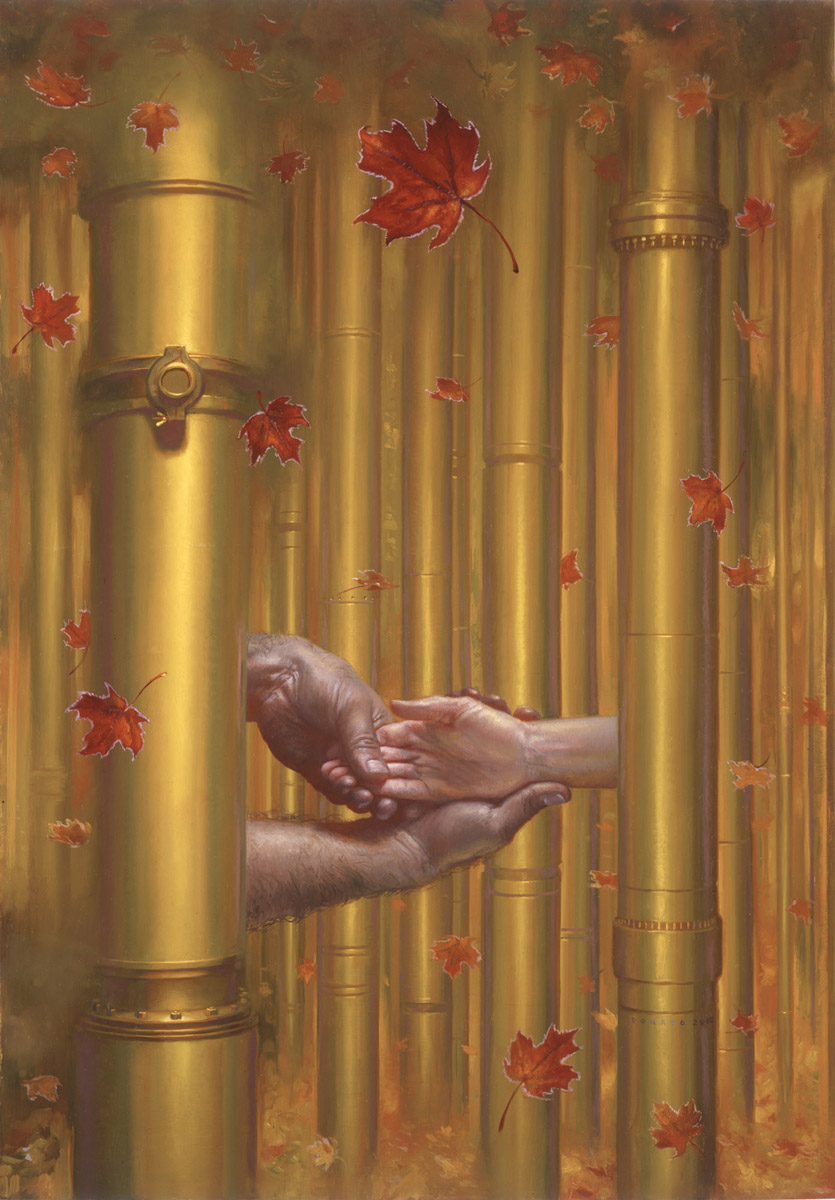 |
| Humans, 20″ x 36″, Oil on Panel, 2003 |
 |
| Burdens – Wood 11″ x 14″ Oil on Panel 2012 |
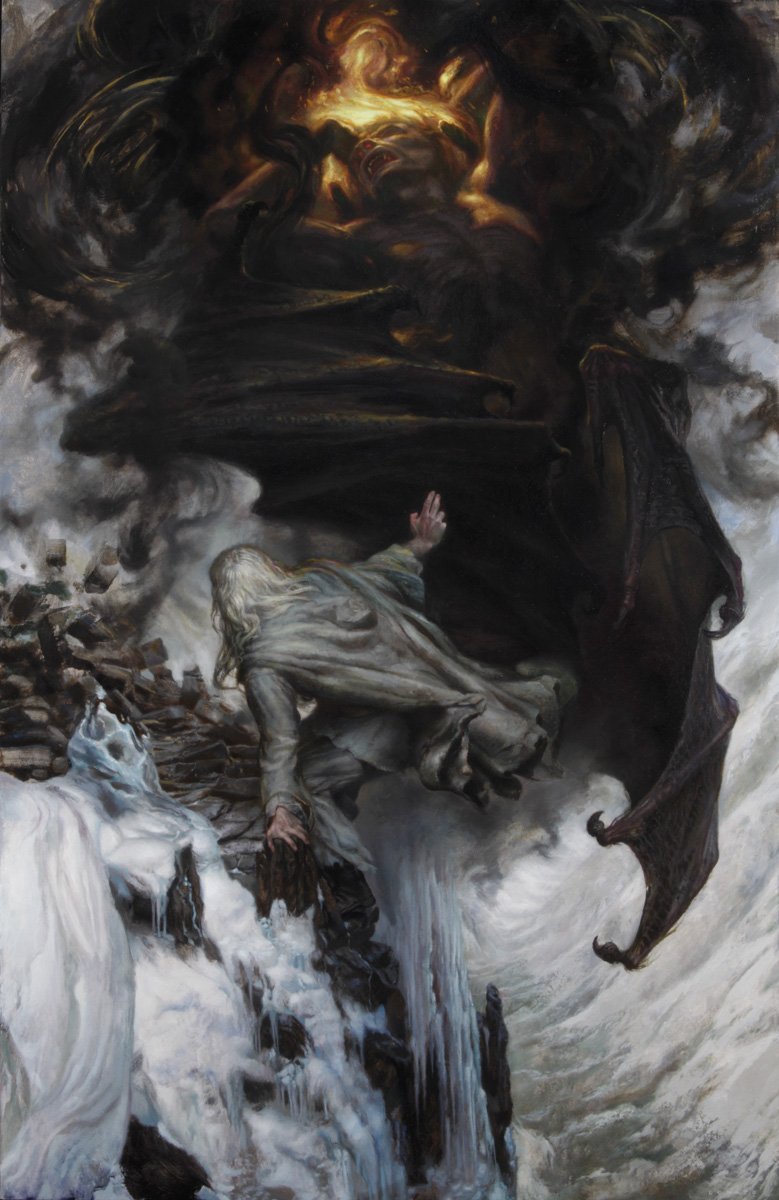 |
| ‘I threw down my enemy…‘, 29″ x 44″ Oil on Panel, 2012 |
Even small hands in a large work of art can carry an enormous impact. Don’t let those minor details slide.


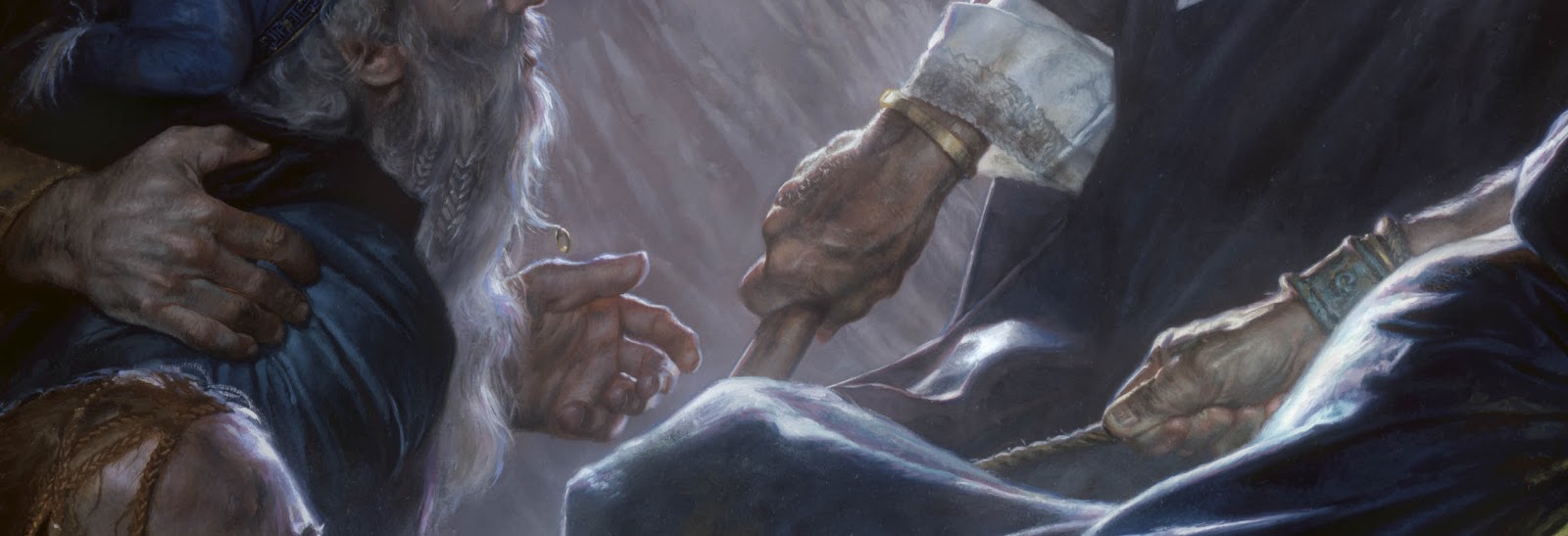
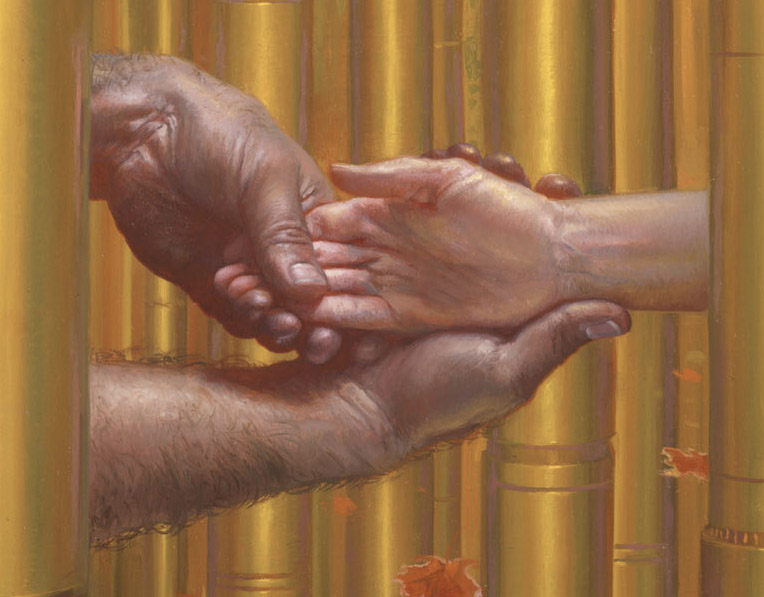
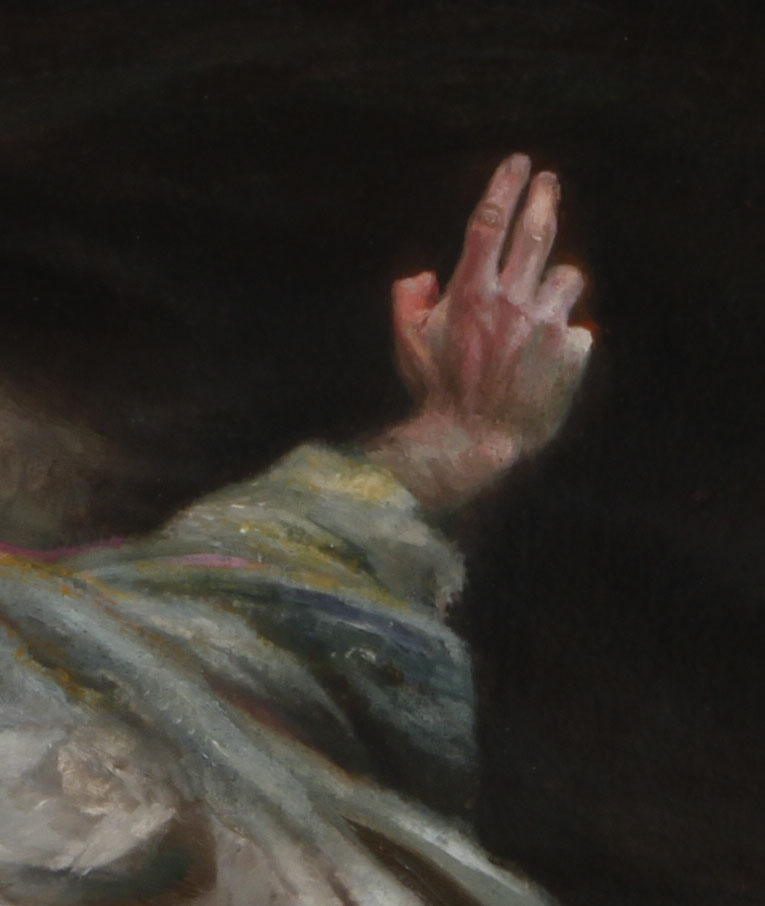





I'm going into anatomy class this very semester and so this is a very inspiring post for me. as my painting and drawing skills constantly improve, even from that of figure-drawing, i am constantly overcome by what to do with those pesky hands. I know that Jesper's last post was not on hands but it may as well have been, his own knowledge of the look really inspires me. i think i'll make a couple print outs of the last weeks' posts to put it for myself.
Forget the hands, I love those Golden Pipes!
Very nice examples of hands! You've definitely mastered them.
Could you maybe go into a little more detail about some of your “4 things” to remember?
Careful observation is pretty self explanatory.
When using collaborating anatomy and structure books do you first do the rough sketch of how you want the hand to be posed and then go back with the books to correct your anatomy?
I would like more goings into how you unify the masses. Maybe an example of when this wasn't done?
I guess exaggeration goes along with what I said before about doing the initial sketch of how you want the hand posed and then perhaps using the anatomy books to make it look more natural? Yes, no?
I've always considered myself to be not that bad at drawing hands but I seem to struggle a lot more when I have to paint them.
I remember seeing “Annunciation” hanging in the hallway of the art building at Syracuse and thinking: that's STUDENT work?!!! I was very impressed with your handling of realistic skin tones… obviously still am. As a student it was nice to see the level of work I needed to aspire to first hand. So often students compare themselves to other students instead of realizing what's needed to get professional work.
This is a rally useful post Donato, thanks for sharing, I have been having trouble with human hands and totally understand what you mean when you mention how you used to hide the hands in a composition behind a certain objet or something else because you weren´t confident drawing and for that matter, painting hands. As a student I find myself on that position many times. Thanks for sharing!
Thank you for this post, Donato. I've always admired the time and effort you put into painting hands. Having these large images to see how you paint them is wonderful.
Scott Talevich
Your posts overflow with information and I find myself going back and re-reading them several times. Your ability to paint hands has pushed me to often do the same, and each time add a little more information into my personal database. Thank you.
awesome! It's true haven't seen you put much painting up here in a while, but really sweet!
painters edmonton
painting contractor edmonton
Thanks for sharing such beautiful examples that inspired me to paint hands in different ways. I liked this video tutorial as well, I think others on your site will find it useful – http://www.jerrysartarama.com/art-lessons/Skill-Level/Intermediate/Intermediate-Hand-Study.html